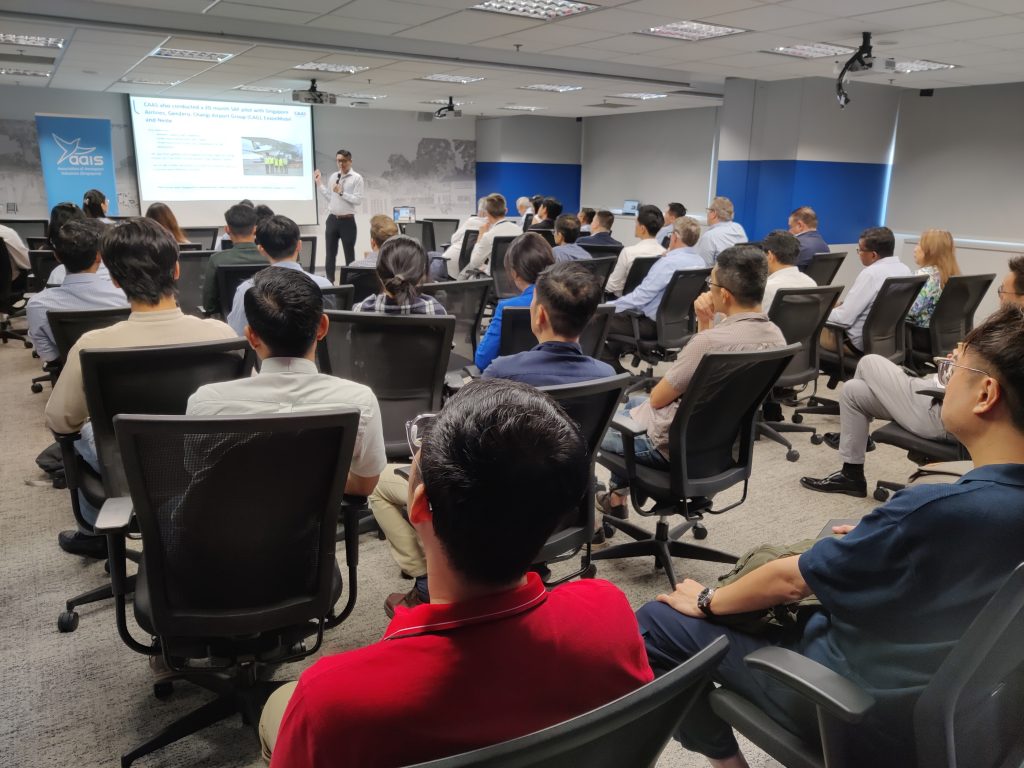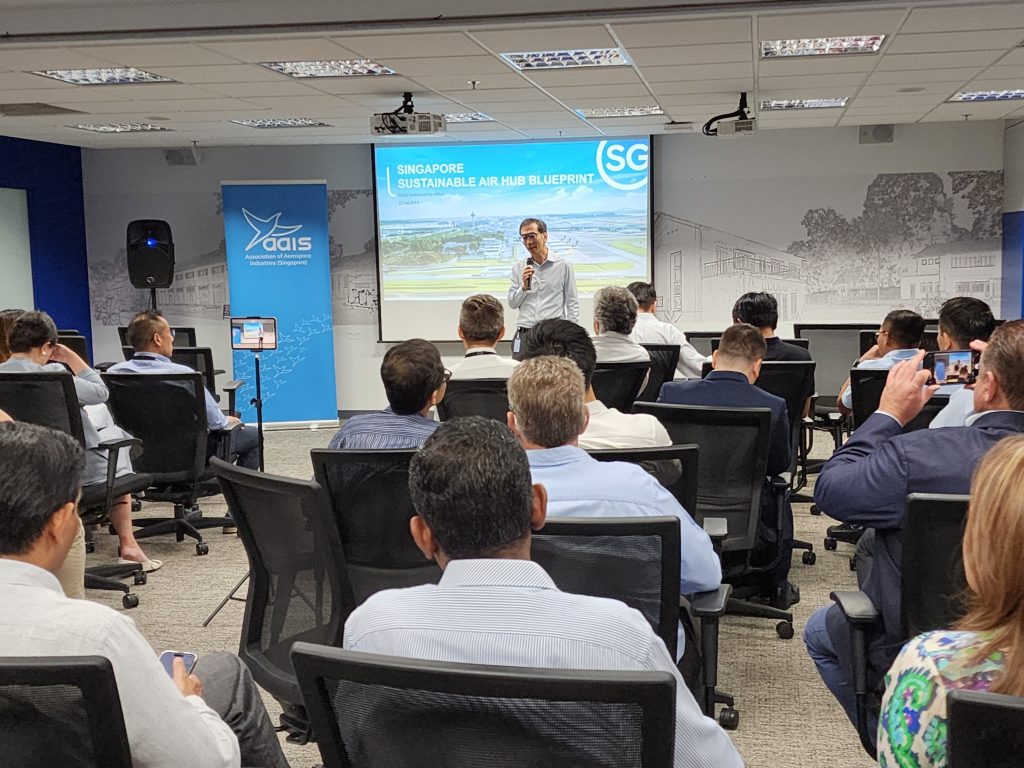On 17 July 2024, AAIS hosted an informative briefing on the Singapore Sustainable Air Hub Blueprint for its members. The event featured Mr Daniel Ng, Chief Sustainability Officer and Senior Director (Aviation Development Group) at the Civil Aviation Authority of Singapore (CAAS), as the key speaker.
Overview of the Sustainable Air Hub Blueprint
Launched in February 2024, the Singapore Sustainable Air Hub Blueprint presents a comprehensive strategy to support the sustainable growth of Singapore’s aviation sector. Spearheaded by CAAS, the blueprint was submitted to the International Civil Aviation Organization (ICAO) as Singapore’s State Action Plan, underscoring the nation’s commitment to balancing environmental responsibility with the continued growth of its aviation industry.
The blueprint sets out targets for reducing carbon emissions, aiming for a 20% reduction in domestic aviation emissions by 2030 compared to 2019 levels, even with anticipated passenger traffic growth. Given the lack of domestic flight activities in Singapore, this target primarily pertains to airport operations. For international aviation, the goal is to achieve net-zero emissions by 2050, in alignment with ICAO’s vision. This effort will involve major Singapore-based carriers – Singapore Airlines (SIA), Jetstar Asia, and Scoot.
To achieve these goals, CAAS will implement 12 initiatives across three domains: airport, airline, and air traffic management (ATM). These initiatives aim to reduce carbon emissions through:
- Absolute reduction of energy use
- Shift to cleaner energy sources, such as alternative fuels and low-carbon electricity imports
- Promotion of circularity practices
- Utilisation of technology to enhance operational efficiency
Sustainable Aviation Fuel (SAF) at the Forefront
SAF has emerged as a key driver of aviation decarbonisation worldwide, and Singapore is at the forefront of initiatives to encourage its adoption in the region. Mr Ng discussed successful pilot tests for SAF use and operational readiness at Changi, achieved in collaboration with Singapore Airlines, Changi Airport Group, GenZero, Neste and ExxonMobil.
A significant announcement made in conjunction with the launch of the blueprint was the mandatory adoption of SAF for flights departing from Singapore starting in 2026, with an initial 1% SAF uplift target. To support SAF adoption, CAAS will introduce a SAF levy for passengers. The levy will vary based on travel distance and class, with proceeds financing the aggregated central procurement of SAF by CAAS.
Mr Ng explained that a fixed cost envelope method was selected to offer cost predictability for airlines and passengers as the SAF supply market is still emerging and SAF prices could fluctuate. The levy amount will be predetermined based on the SAF target and the estimated SAF price at that time. The uplift target is expected to rise to 3 to 5% by 2030, depending on global developments and the availability of SAF.
Airport and ATM Domain Initiatives
The blueprint also outlines initiatives to reduce carbon emissions at Singapore’s Changi and Seletar airports, including transitioning airside vehicles to cleaner fuels, increasing the deployment of solar power, and conducting a feasibility study for installing solar panels on the airfields.
Under the ATM domain, CAAS will undertake initiatives such as demand-capacity balancing, performance-based navigation enhancements, and gate-to-gate trajectory optimisation to boost efficiency and reduce fuel burn.
Critical Enablers for Success
At the briefing, Mr Ng also emphasised the importance of critical enablers for the blueprint’s implementation, including infrastructure planning and development, workforce transformation and skills development, and international partnerships and collaborations. Mr Ng also shared CAAS’ plans for establishing an Asia-Pacific Sustainable Aviation Centre, which will focus on research and development of sustainable aviation policies tailored to the region and exploring regional feedstock options for SAF production.
Members present had the opportunity to participate in a Q&A session, where there was particular interest in SAF supply, feedstock quality and availability. Mr Ng acknowledged the role of policy-makers in encouraging the production of SAF. He also addressed the challenges of promoting SAF adoption, highlighting the lack of commercial demand due to a limited understanding of the product and higher costs associated with SAF use.
Driving Sustainability in the Singapore Aerospace Industry
AAIS remains committed to supporting industry efforts in sustainability. At the briefing, AAIS Chief Executive highlighted the Association’s ongoing initiatives, following through from the AAIS Sustainability Roadmap rolled out in 2022. He highlighted positive developments from the Singapore aerospace industry, citing a 214% growth in solar power adoption between 2020 and 2023, as outlined in the Singapore Aerospace Industry Solar Adoption Report 2023.
To further drive sustainability, AAIS actively facilitated the development of a sustainability framework for industrial parks, which will see Seletar Aerospace Park serving as a pilot site. Members were encouraged to participate in these activities as well as explore opportunities to support the goals of the Singapore Sustainable Air Hub Blueprint.





Recent Comments